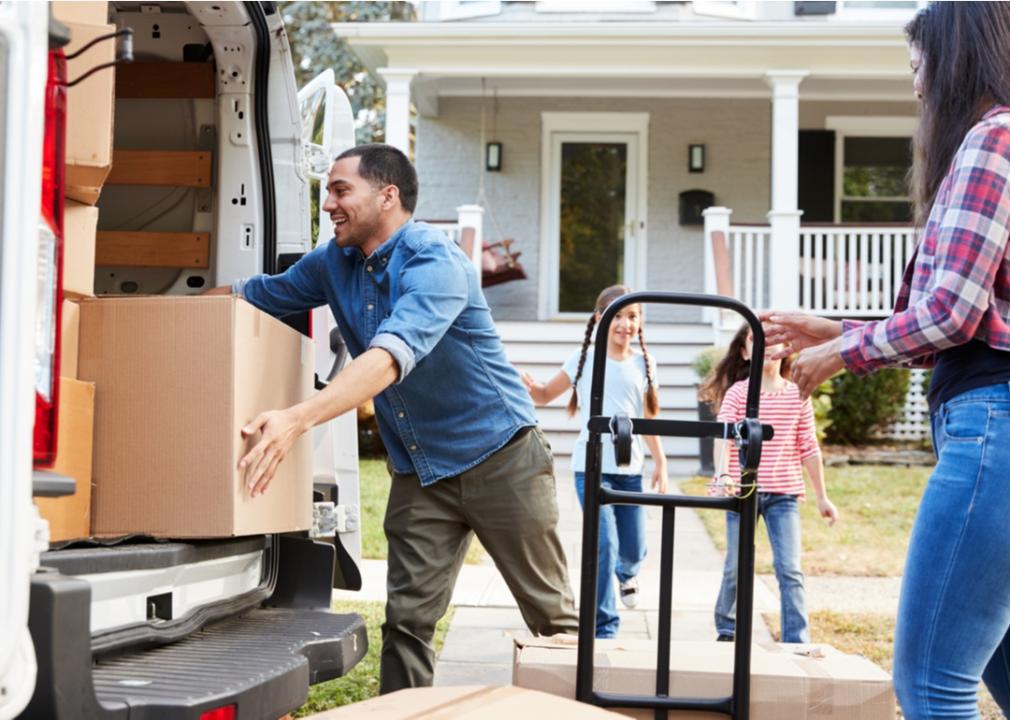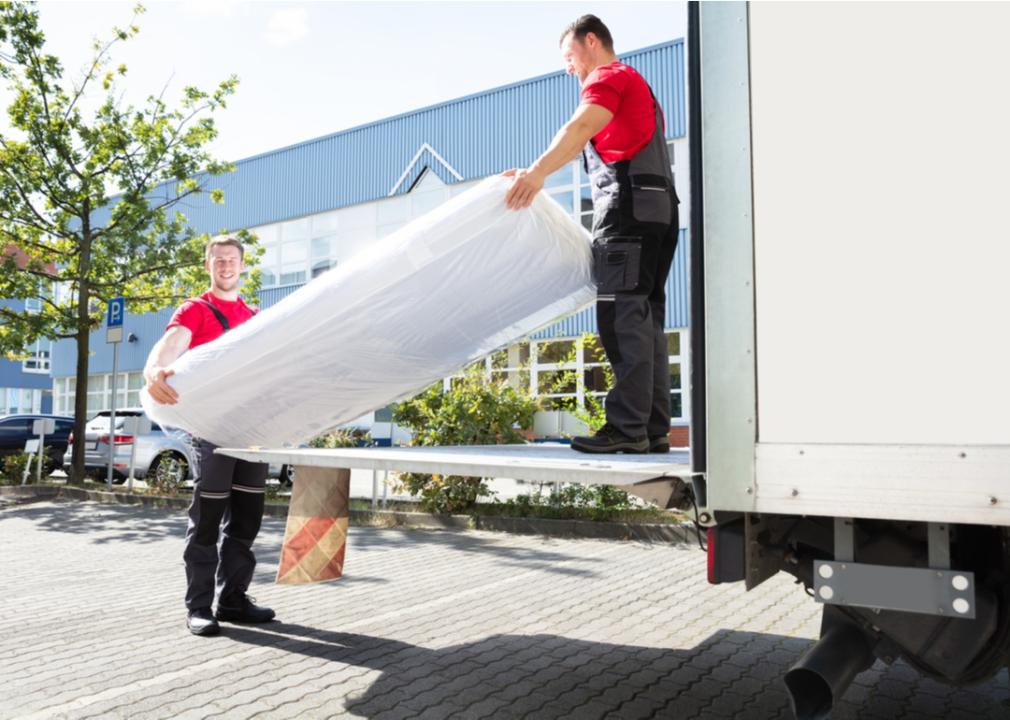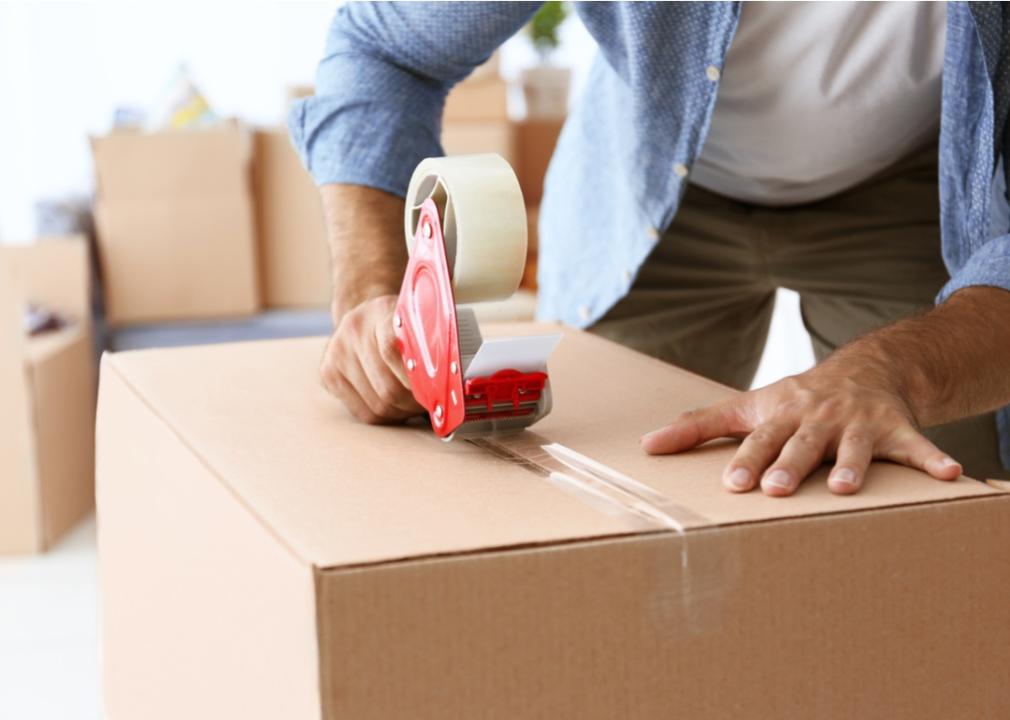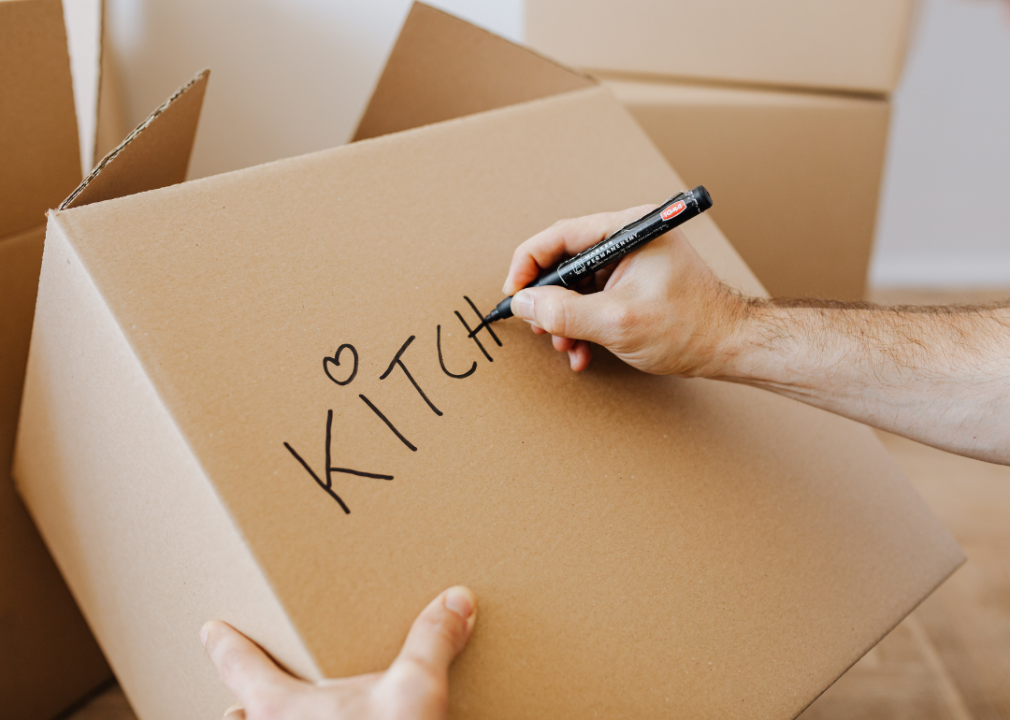5 common mistakes people make when moving
Monkey Business Images // Shutterstock
5 common mistakes people make when moving
Family unloading a moving truck.
When the COVID-19 pandemic struck and remote work became the new normal, many Americans seized the opportunity to relocate. But if you think all there is to moving house is packing up and hiring help, think again. To help make your moving experience as productive as possible, Extra Space Storage shared five common mistakes to avoid when planning your next move.
The majority of moves over the past five years have been local, with 84% of people moving within the same metro area, according to 2020 United States Postal Service and U.S. Census Bureau data analyzed by Bloomberg and Forbes. What the data also showed: 82% of movers were leaving urban centers in favor of suburban counties, and 91% of counties classified as suburban had more people moving in than out.
Delving further into U.S. migration trends over the last five years, the Census Bureau discovered nearly half of those who moved did so due to housing costs or home-related issues. Even though the number of people moving is decreasing, more than 27 million U.S. residents packed their belongings and resettled in 2021 alone.
This mass exodus has led to price hikes for houses and rental properties. According to a March 2022 report from Reuters, house prices rose by 17% in 2021—and they’re forecasted to double in 2022, despite rising interest rates. Another kink in the moving pipeline: finding available—not to mention affordable—movers.
Read on to learn some of the most common oversights people make when moving.
![]()
Andrey_Popov // Shutterstock
Not researching movers
Movers carrying a mattress from a truck.
Again, timing is key here. Don’t put off scheduling a mover, especially during peak moving season—April through October—when demand is high. Two ways to save on costs: schedule a weekday move and slate your move for mid-month.
Delay scheduling, and you may need to arrange interim move options, like temporarily placing items in storage. In instances where there’s no wiggle room on the scheduling front, hiring a truck and making the move on your own is always an option. Some folks with fewer items may even opt to ship their boxes via shipping services, bus companies, or train lines.
If you hire movers, assess the costs and options for local versus long-distance moves.
A local move differs significantly in price from those that are long-distance. Local move estimates are generally based on the hours it takes to complete a move, including drive time. Time minimums can be enforced and include doubling drive time charges. Large items such as appliances and furniture may also carry an extra cost not factored into an initial estimate.
For long-distance moves, there are myriad options, including a shared load truck that delivers loads to multiple households. Ask if the mover charges by mileage, weight, space used in the truck, fuel, or all of the above. Look for hidden fees in the contract’s fine print. The first quote given over the phone is often not what the ultimate fee will be, and sticker shock can result when the actual total surfaces.
Africa Studio // Shutterstock
Packing inefficiently
Taping a moving box.
Whether you buy boxes, get them for free from stores that are getting rid of them anyway, or snag them from people giving them away locally via social media, you’ll need a variety of cardboard cubes for your move. If you opt for plastic bins, bear in mind you may be required to tape them all around to prevent the lid from unlatching—forgetting to do so could cause delays on moving day.
Breakable items should be bubble wrapped or covered with paper or newspaper. With extremely fragile objects, Styrofoam peanuts might also be helpful. Be sure to check if your moving company transports glass objects, like glass tabletops, in advance. If not, you may want to opt for stowing these items in the back of a personal vehicle or ditching them altogether.
Something else most movers won’t transport: liquids. If you have a well-stocked bar, bottles of alcohol will need to make the move another way, as will items like cooking oils. However they’re transported, special packing applications should be taken to ensure liquids don’t spill or break.
It’s helpful to mark boxes clearly by designated rooms, both for yourself and your movers. Denoting what’s inside is also helpful for the person unpacking. This makes keeping a master list of all of your boxes and their contents incredibly beneficial.
One last packing tip: If you opt to have a moving company pack for you, take whatever you don’t want packed out of the house on packing day. Leaving “Don’t Pack” notes on certain items doesn’t mean they won’t get packed anyway. So save yourself the headache of rummaging through every single box for little necessities like remotes, power cords, and small devices by sorting those items yourself.
Canva
Not packing for cooking
Labeling a kitchen box for moving.
While missing kitchen items might sound like an excellent excuse to eat out at restaurants, dining options may be limited, or merely meh. Not to mention, dining out can rack up quickly—especially if you’re feeding for more than just yourself—and that adds yet another expense to your moving costs.
Spending the extra time sorting and packing kitchen cutlery, appliances (big and small), and the assortment of pantry items is a proactive way of getting ahead of the curve when it comes time to prepare your first home-cooked meal at your new place. Plan a menu for your move, including items you’ll need before, in transit, and upon arrival—especially if you’re moving cross-country, as fresh food may not be readily available along the route.
Of course, not all food items are made equally. So if you must ditch any perishables before hitting the road, check local food banks or soup kitchens to see if any are accepting donations.
Monkey Business Images // Shutterstock
Not changing address
Overhead shot of man on his phone surrounded by boxes.
Establishing a new address is imperative for many reasons, including being able to prove residency for registering a vehicle, obtaining a new driver’s license, and updating voter registration. When changing an address, however, it’s essential to know the postal service will only forward mail for free up to a certain amount of time, depending on the type of mail. There is an option to pay for extended forwarding via the U.S. Postal Service.
Additional resources that offer information on the ins and outs of changing your address include USPS, USA.gov/moving, and, MyMove, an authorized affiliate of the USPS that offers great discounts for movers—from Amazon deals to discounts at hardware stores.
Monkey Business Images // Shutterstock
Forgetting to set up utilities
Man and woman moving into new place.
When moving, it’s necessary to shut down existing accounts for utilities while setting up accounts for a new residence. A list could include water, electricity/power, cable, internet/phone, and garbage pick-up. Ongoing newspaper delivery should also be canceled.
Timing is everything—don’t have existing utilities halted until you’re out of the former abode. On the flip side, make sure utilities at your new residence are ready and waiting for your arrival. Orchestrating the off and on of utilities will avoid double payment of bills. It’s easy to forget to cancel autopay set up through providers or your bank. Rent and mortgage payments also fall into this category.
Some money-saving tips: Ask new service providers if they offer specials to new customers and if they’ll waive installation and activation fees.
This story originally appeared on Extra Space Storage and was produced and
distributed in partnership with Stacker Studio.





